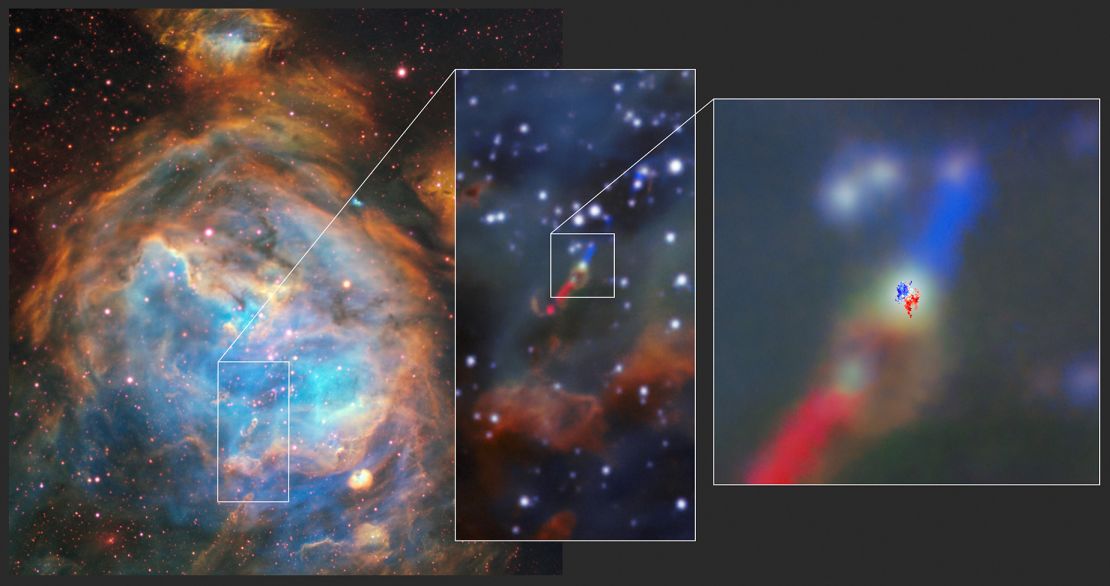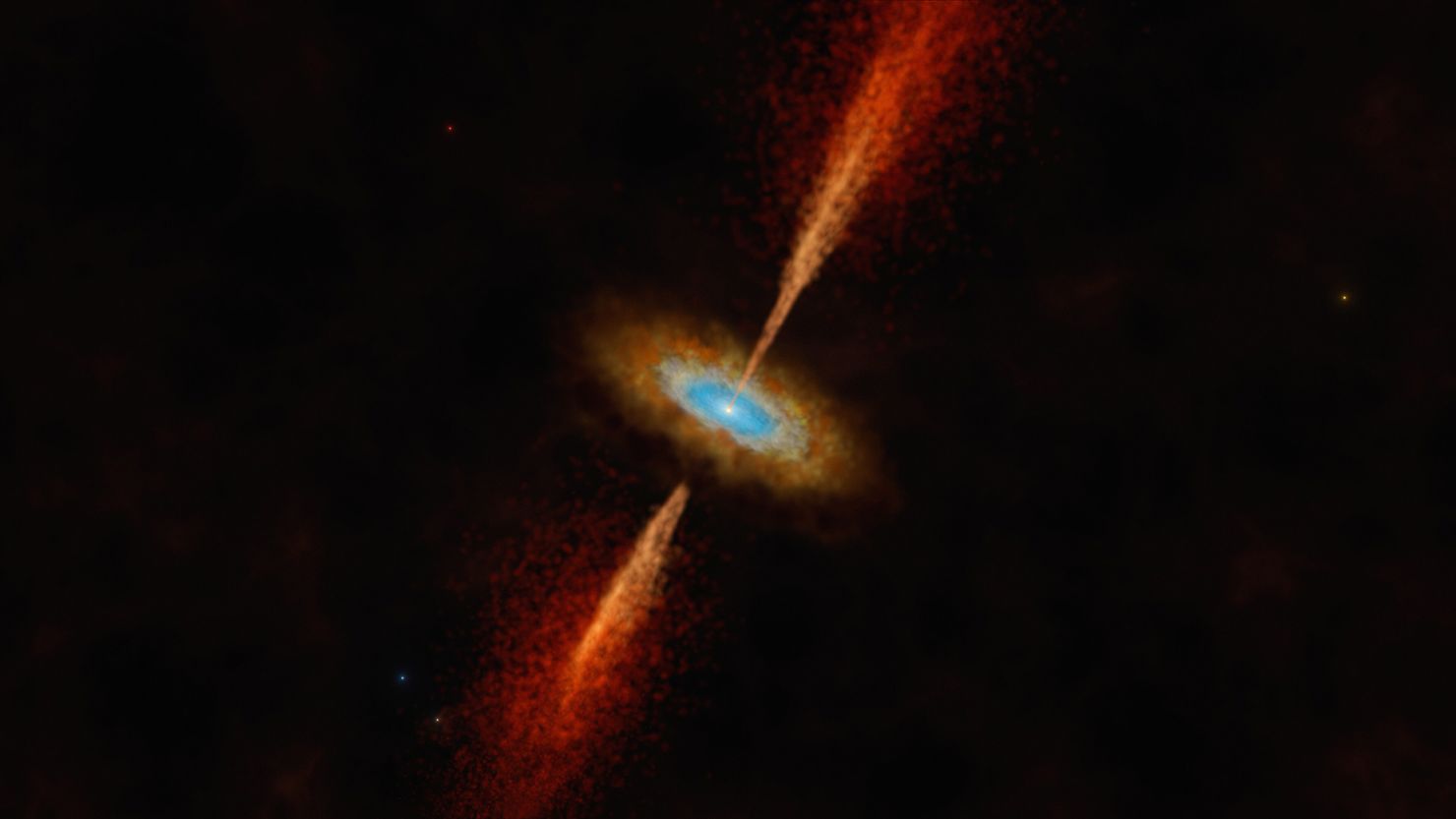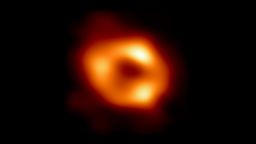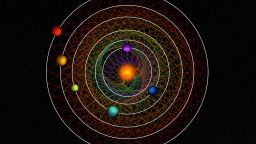Sign up for CNN’s Wonder Theory science newsletter. Explore the universe with news on fascinating discoveries, scientific advancements and more.
For the first time, astronomers have glimpsed a young star outside the Milky Way galaxy that’s ringed by a dense disk where planets may form.
The massive star, called HH 1177, and its rotating disk were spotted in the Large Magellanic Cloud, a neighboring dwarf galaxy that’s about 160,000 light-years away. The unprecedented find could help scientists gain a better understanding of star and planet formation.
A newborn star grows in size by pulling in matter from its surroundings. The gas and dust accumulate in a flat disk around the star, known as an accretion disk, as a result of strong gravitational forces. The spinning disk transports the matter onto the star, which gets increasingly larger. The greater the star’s mass, the more powerful its gravitational field becomes, thereby pulling more gas and dust into the disk.
A colossal star such as HH 1177 lives fast and die young, forming more quickly and only having a life span that’s a fraction of that of a star like our sun. This shortened timeline makes the early stages of a massive star hard to observe in our galaxy, as both the star and its disk is hidden from view by the dusty material from which it forms.
But the material from which stars are formed within the Large Magellanic Cloud is different from that of the Milky Way.
HH 1177 is within a stellar nursery, called N180, that has less dust and lower metal abundance. The star isn’t obscured by a cocoon of gas and dust, providing a distant but clear view.
“When I first saw evidence for a rotating structure in the ALMA data I could not believe that we had detected the first extragalactic accretion disc, it was a special moment,” said lead study author Dr. Anna McLeod, an associate professor of physics at Durham University in the United Kingdom, in a statement. “We know discs are vital to forming stars and planets in our galaxy, and here, for the first time, we’re seeing direct evidence for this in another galaxy.”
Astronomers made the detection of the star, which is estimated to be about 15 times the mass of our sun, using the Atacama Large Millimeter/submillimeter Array of telescopes in Chile, known as ALMA. The findings were published Wednesday in the journal Nature.
Dynamic activity of a young star
The ALMA observations came as a follow-up to a previous detection made with the European Southern Observatory’s Very Large Telescope. The Multi Unit Spectroscopic Explorer, or MUSE instrument, on the telescope captured a jet of material releasing from the young star. HH 1177 was found deep within a gas cloud of the galaxy.
“We discovered a jet being launched from this young massive star, and its presence is a signpost for ongoing disc accretion,” McLeod said.

To discern whether a disk was present around the star, the team needed to measure how quickly dense gas moved around the star.
When matter is drawn toward a young, evolving star, it doesn’t fall directly onto the celestial object. Rather, the material flattens out and spins around the star and forms a disklike structure. The disk rotates faster at its center. The difference in speed can help astronomers determine if a disk has formed around a star.
“The frequency of light changes depending on how fast the gas emitting the light is moving towards or away from us,” said study coauthor Dr. Jonathan Henshaw, a research fellow at the UK’s Liverpool John Moores University, in a statement “This is precisely the same phenomenon that occurs when the pitch of an ambulance siren changes as it passes you and the frequency of the sound goes from higher to lower.”
The ALMA observations were able to make detailed measurements of the disk’s spin.
Young stars aren’t the only celestial phenomena with accretion disks. Supermassive black holes also have thin, hot disks of matter swirling around them that they feed off of.
“We are in an era of rapid technological advancement when it comes to astronomical facilities,” McLeod said. “Being able to study how stars form at such incredible distances and in a different galaxy is very exciting.”





